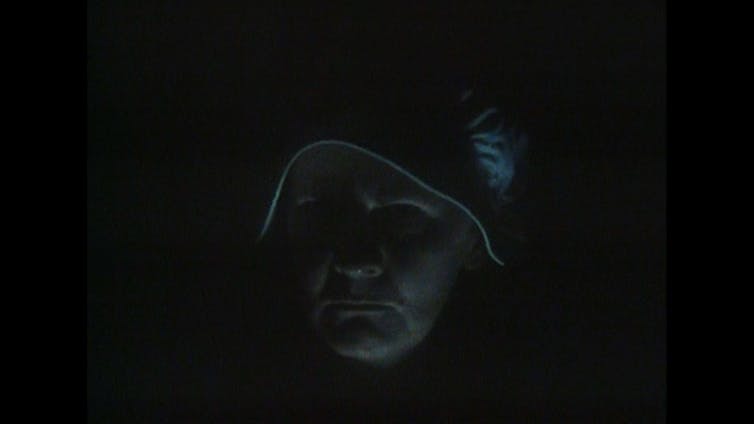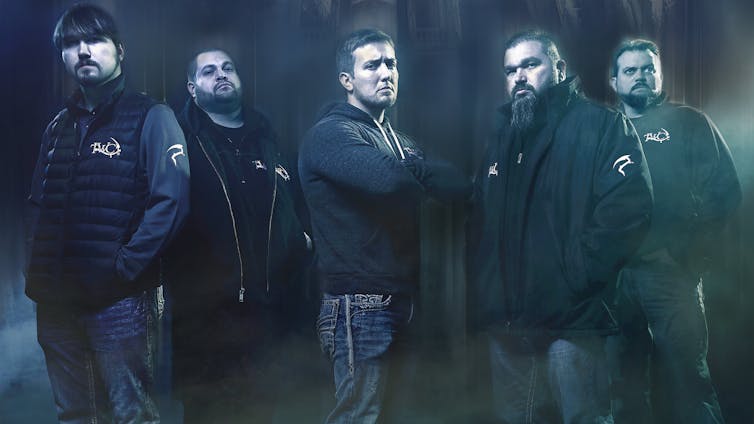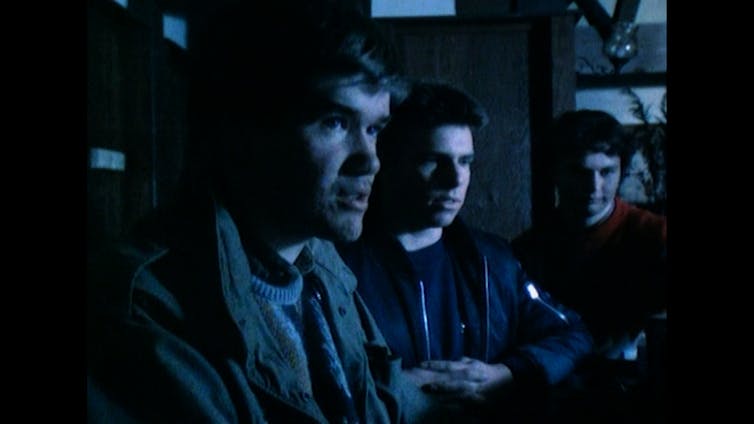On a crisp winter evening in 1985, a documentary went to air whose advance advertising promised to scare viewers out of their wits. It didn’t disappoint.
This year marks the 40th anniversary of the broadcast of Haunted on Australian television.
Following the success of the 1984 Ghostbusters movie, there was a public appetite for all things spooky.
Over the course of 97 minutes, Haunted documents 14 cases of alleged hauntings across Australia, from Fremantle in the west, to the convict settlements of Tasmania’s Port Arthur, to Brisbane’s leafy inner suburbs.
Commissioned by Network 10 with the brief to “scare the pants off people”, writer and director Iain Gillespie and his crew travelled the country to interview everyday people about their paranormal experiences.
Haunted rated well upon transmission. Yet four decades on, Gillespie tells me has mixed feelings about it:
It was made as a commercial documentary. I would rather have done something more scientific.
Even so, the program would go on to become a major precursor to the paranormal TV genre.
Exploring old haunts
The success of Haunted hinges on the seeming credibility of its witnesses.
In one scene, a vehicle welder speaks nervously of his encounter with a girl in a striped bikini who vanished before his eyes.
And perhaps most memorable is the little athletics club mum who, while puffing on a cigarette, describes a phantom matron who stood outside her hostel window and stared at her blankly.

Network Ten/Iain Gillespie/Terry Carlyon
Much of Haunted’s eerie atmosphere comes down to its visuals. Gillespie credits cinematographer Terry Carlyon for the documentary’s stylistic look:
He shot building exteriors in the daytime, but by using filters and low camera angles, made them look like night and very creepy.
Ghosts take over the media
The mainstream media’s coverage of the paranormal started in the Victorian era with spirit photography. The first spirit photo was published in 1862, and the medium was later championed by the likes of Sherlock Holmes creator Arthur Conan Doyle.
The 20th century saw investigators such as Harry Price, Hans Holzer and Maurice Grosse document cases of everyday people dealing with ghosts and hauntings.
The Enfield Poltergeist in late 1970s London is a good example. Investigated by Grosse and Ed and Lorraine Warren (the couple who inspired the glamorised Conjuring film franchise), the case received much exposure in the press – including in Australian tabloids.
In 1992, an infamous live paranormal investigation called Ghostwatch aired on British TV on Halloween night.
Although it was a mockumentary, it was given credence by being presented by respected journalists and hosted by TV presenter Michael Parkinson. By the end of the show, Parkinson was standing in an abandoned TV studio apparently possessed by the demonic entity his team had been investigating.
In the days following the broadcast, the BBC received thousands of complaints from viewers who were disturbed by the program.
But it was arguably Britain’s Most Haunted (2002–19) that set the formula for modern paranormal reality TV more than any other show.
The investigative team, which included a host, camera crew, parapsychologist and psychic medium, would spend the night in a purportedly haunted location and make extensive use of night-vision cameras and environment-sensitive devices.
Footage would then be furnished with fast edits, creepy music and unsettling flashes of spooky graphics.
Between 2004 and 2019, more than 70 documentary-style paranormal series aired in the United States alone.
The American show Ghost Asylum (2014–16) is one egregious standout. It follows a burly band of brothers who have the absurd intention of being the first team to “trap a ghost” via their own spook-snaring contraption.

Prime Video
A more “authentic” example is The Other Side (2014–). In this series, a small team of Indigenous Canadians investigate haunted places in a respectful manner, with a smudging (smoking) ceremony held prior to each investigation.
Ghost-hunting in the digital age
The interest in ghost-hunting on TV has also been reflected in the growth of amateur “paranormal societies” the world over. Multiple groups have formed, particularly in the US, and gained members through social media. There was also a spike in ghost reporting during COVID lockdowns.
The technologies used in “ghost-detecting” equipment have developed markedly since the ’90s and noughties. Today, investigators such as host of the long-running Ghost Adventures Zak Bagans and his team use electromagnetic field (EMF) meters and digital thermometers to track sudden drops in temperature – generally associated with the suspected presence of a ghost.
Other recent advancements include spirit boxes and the ovilus: devices to translate environmental fluctuations into spoken words, giving a “voice” to ghosts.
There are also structured light sensor (SLS) cameras adapted from the body-sensing technology of the Xbox gaming console. These project an infrared grid to allegedly detect and visualise human-like phantom forms as stick figures, even in complete darkness.
Much of this tech was influenced by the devices in the original Ghostbusters movie.
A lasting legacy
In the final segment of Haunted, Iain Gillespie featured three amateur ghost-hunting schoolboys who spent a night in a supposedly haunted restaurant in Melbourne, using simple equipment they had built themselves.

Network Ten/Iain Gillespie/Terry Carlyon
These days, Gillespie doesn’t have much time for the tide of ghost-hunting programs taking over our screens:
I look in vain for something that is credible. I am yet to find one.
But whether or not you’re a believer, there’s no doubt paranormal reality TV fulfils a need in many viewers to seek confirmation that some part of us can survive death.
![]()
Alasdair Macintyre does not work for, consult, own shares in or receive funding from any company or organisation that would benefit from this article, and has disclosed no relevant affiliations beyond their academic appointment.


Leave a Reply